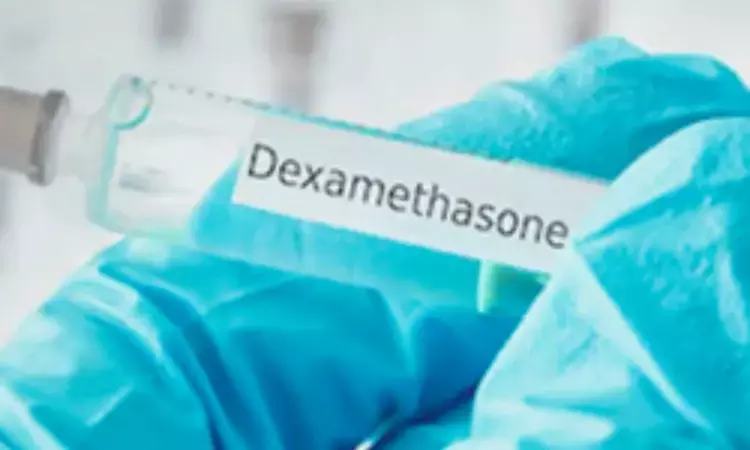- Home
- Medical news & Guidelines
- Anesthesiology
- Cardiology and CTVS
- Critical Care
- Dentistry
- Dermatology
- Diabetes and Endocrinology
- ENT
- Gastroenterology
- Medicine
- Nephrology
- Neurology
- Obstretics-Gynaecology
- Oncology
- Ophthalmology
- Orthopaedics
- Pediatrics-Neonatology
- Psychiatry
- Pulmonology
- Radiology
- Surgery
- Urology
- Laboratory Medicine
- Diet
- Nursing
- Paramedical
- Physiotherapy
- Health news
- Fact Check
- Bone Health Fact Check
- Brain Health Fact Check
- Cancer Related Fact Check
- Child Care Fact Check
- Dental and oral health fact check
- Diabetes and metabolic health fact check
- Diet and Nutrition Fact Check
- Eye and ENT Care Fact Check
- Fitness fact check
- Gut health fact check
- Heart health fact check
- Kidney health fact check
- Medical education fact check
- Men's health fact check
- Respiratory fact check
- Skin and hair care fact check
- Vaccine and Immunization fact check
- Women's health fact check
- AYUSH
- State News
- Andaman and Nicobar Islands
- Andhra Pradesh
- Arunachal Pradesh
- Assam
- Bihar
- Chandigarh
- Chattisgarh
- Dadra and Nagar Haveli
- Daman and Diu
- Delhi
- Goa
- Gujarat
- Haryana
- Himachal Pradesh
- Jammu & Kashmir
- Jharkhand
- Karnataka
- Kerala
- Ladakh
- Lakshadweep
- Madhya Pradesh
- Maharashtra
- Manipur
- Meghalaya
- Mizoram
- Nagaland
- Odisha
- Puducherry
- Punjab
- Rajasthan
- Sikkim
- Tamil Nadu
- Telangana
- Tripura
- Uttar Pradesh
- Uttrakhand
- West Bengal
- Medical Education
- Industry
Systemic dexamethasone proven treatment for bronchopulmonary dysplasia but role for hydrocortisone uncertain: JAMA

Researchers have discovered that dexamethasone can significantly increase survival free of cerebral palsy in preterm infants at high risk of bronchopulmonary dysplasia (BPD) but may even harm babies with a lower risk of BPD. This underlines that systemic corticosteroid treatments need to be customised according to the individual level of BPD risk in neonatal care. A recent study was conducted by Lex W. and colleagues published in JAMA Pediatrics.
The most frequent complication in former preterm infants is BPD, with later outcomes often severe. In recent years, systemic postnatal corticosteroids, including dexamethasone and hydrocortisone, have been extensively administered to prevent BPD. The objective of this study was to elucidate whether the type of corticosteroid used and the timing of treatment significantly affect survival without cerebral palsy in preterm infants.
This comparative effectiveness study reviewed 26 randomized clinical trials that supported 3,700 infants born preterm and at BPD risk. The studies were conducted across 10 countries between 1989 and 2022 and measured outcomes such as the incidence of BPD, survival rates, and cerebral palsy at diagnosis. The interventions were systemic dexamethasone and hydrocortisone; nearly half of the studies began treatment within the first week of life.
BPD Risk and Treatment Outcomes:
Dexamethasone showed improved survival free of cerebral palsy in infants with a BPD risk greater than 70%.
Harmful effects were observed in infants with a BPD risk lower than 30%.
For every 10% point increase in BPD risk, dexamethasone improved survival rates without cerebral palsy by 3.74% (95% CI: 1.54-5.93%; p= 0.002).
Corticosteroid Comparison:
69% of studies focused on dexamethasone, while 31% analyzed hydrocortisone.
Evidence for the benefit of hydrocortisone was weaker, with significant effects only in neonates at 30% or less risk for BPD.
Timing of Treatment:
46% of studies started corticosteroid therapy in the first week after birth.
There was no strong evidence that differences in timing affected the outcomes of dexamethasone (interaction coefficient: 0.13; 95% CI: −0.04 to 0.30; p =0.14).
Dexamethasone reduces the risk of subsequent cerebral palsy but increases mortality in high-risk preterm infants without cerebral palsy, a fact for which it should not be used in low-risk patients due to the potential for harm. The studies highlight the requirement for stratifying risks before utilizing corticosteroids in neonates.
Reference:
Doyle, L. W., Mainzer, R., & Cheong, J. L. Y. (2024). Systemic postnatal corticosteroids, bronchopulmonary dysplasia, and survival free of cerebral palsy. JAMA Pediatrics. https://doi.org/10.1001/jamapediatrics.2024.4575
Dr Riya Dave has completed dentistry from Gujarat University in 2022. She is a dentist and accomplished medical and scientific writer known for her commitment to bridging the gap between clinical expertise and accessible healthcare information. She has been actively involved in writing blogs related to health and wellness.
Dr Kamal Kant Kohli-MBBS, DTCD- a chest specialist with more than 30 years of practice and a flair for writing clinical articles, Dr Kamal Kant Kohli joined Medical Dialogues as a Chief Editor of Medical News. Besides writing articles, as an editor, he proofreads and verifies all the medical content published on Medical Dialogues including those coming from journals, studies,medical conferences,guidelines etc. Email: drkohli@medicaldialogues.in. Contact no. 011-43720751


